This is the fifth article in a series on medieval (and modern) marriage. The preceding articles are listed below.
The historian James Brundage wrote extensively on the marital ethics and attitudes of the Middle Ages. He divided medieval perspectives on marriage into three broad categories in which conjugal sexuality was understood as 1) a means of procreation, 2) an unfortunate necessity for those unwilling to embrace virginity, or 3) an expression of intimacy and affection between spouses. This series has sought to cast light on Christian marriage by examining, through the lens of paradox, medieval attitudes toward marriage that strike us as negative, or dismissive, or unduly harsh. Thus, we’ve been focusing on writers who emphasized perspectives #1 and #2.
It is important to recognize, however, that perspective #3 was also present in medieval culture. Indeed, this entire series began with thoughts that were seeded by
’s essay on the marital theology of St. Thomas Aquinas, who is not exactly a “fringe” thinker in the Christian intellectual tradition, and who said such things as this:“The Lord, in order to show that the marital act is good, worked His first sign during a wedding and ennobled marriage by His bodily presence [there].”
And this:
Even a pagan husband “commits no sin in knowing his wife, if he renders the debt either for the good of children or from the fidelity with which he is bound to his wife.”
And this:
“As regards what is signified … marriage is the noblest [sacrament], because it signifies the conjunction of the two natures in the person of Christ.”
To the notion that sexual pleasure within matrimony is inherently sinful, Aquinas replies with one devastating stroke of his Aristotelian pen:
“The pleasure connected with a good activity is good, with an evil activity, evil.”
(Perhaps it goes without saying at this point, but Kwasniewski’s article is a must-read for anyone who is interested in this topic.)
When reflecting on these quotations, we must remember two things: first, scholars and clerics of the Middle Ages produced a great many documents that have not survived the ravages of time, and second, rigorous and saintly theologians like Thomas Aquinas did not hold opinions that were nonexistent elsewhere in medieval thought. It would be more accurate to view the Angelic Doctor as the illustrious spokesman of a small school whose attitudes toward marriage were—forgive me for using this word in a positive sense—relatively modern. (My fingers were kind of twitching as I typed that.) Thus, we cannot speak of medieval churchmen as being universally harsh and negative in their approach to the married life. Rather, we must speak of an imbalance, and as we saw in Part Four, imbalance in the theoretical or rhetorical domain may reflect a sort of “mystical logic” by which medieval society achieved, in the practical domain, something that nowadays seems almost miraculous: a matrimonial culture so balanced as to remain, over the course of about one thousand years, stable, traditional, robust, and fruitful.
Nevertheless, the more negative perspectives certainly did predominate, especially in the Early and High Middle Ages, and this leads us to the central paradox of medieval marriage.
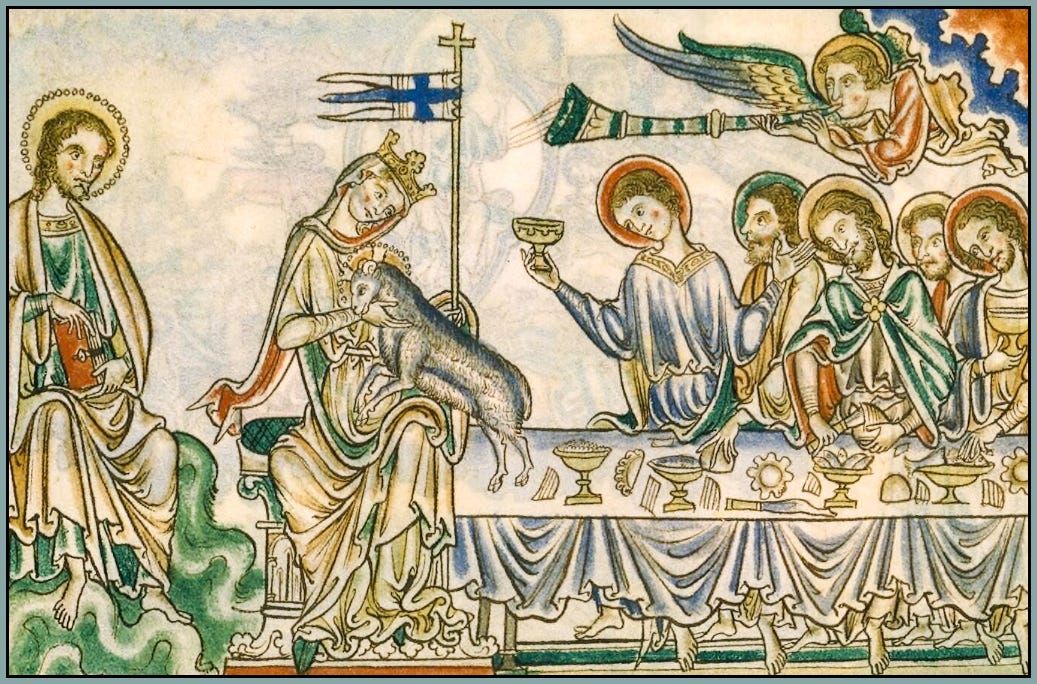
The fathers of the Council of Trent made the following declaration: “If any one shall say that matrimony is not truly and properly one of the Seven Sacraments of the Evangelical Law, instituted by Christ our Lord, but was invented in the Church by men, and does not confer grace, let him be anathema.” It is a foremost priority of my life to never be anathema. Thus, I want to state clearly that since the institution of the New Covenant, marriage has always been a sacrament.
Nevertheless, the Church’s understanding of marriage, as of other eminent mysteries such as Holy Communion, was for many years in a state of gradual growth and development. Allow me to digress briefly in proposing that this ought not provoke the slightest doubt or disconcertion in the Christian mind. On the contrary, it is a wondrous and beautiful thing that the Almighty should entrust human beings with some precious yet complex truth, and then look on with fatherly joy as we unveil and unfold this truth through exertions of mind and soul; such generosity in the economy of Revelation befits the loving goodness of God. It also accords with the deepest nature of man—as Aristotle said in the immortal opening sentence of the Metaphysics, “all men by nature desire to know.” The quest for knowledge, of one type or another, is fundamental to our happiness, indeed to our very existence. God knows this, and though He demands that we obey, in that “spirit of faith” of which the Apostle speaks, He also invites us to understand, in the spirit of inquiry and prayer.
Let’s return to the matter at hand, then, and ask ourselves one crucial question: What is the highest compliment we can pay to Christian marriage? If we were to say only one admiring and inspiring thing about this institution, which has always been entangled in the earthy realities of romance and sensual pleasure and social order, what would it be? For me, the answer is clear: marriage is a sacrament, and not merely a sacrament in some sort of general sense but one of the Seven Sacraments, and is therefore placed on a throne so lofty that it might stand and join hands with mysteries as sublime as Holy Orders, by which a mortal man gains priestly powers that surpass our comprehension, or the Holy Eucharist, by which God’s Flesh and Blood are offered in sacrifice and given as nourishment, or Holy Baptism, by which a human being is redeemed from the thralldom of Hell and reborn unto life in God’s infinite and everlasting love.
This aspect alone—is it not extraordinary, exhilarating, almost dizzying in its glorious audacity? And what I want to emphasize today is a historical perspective that is, I think, not widely known. Our current understanding of marriage as a sacrament—as one of the seven sacred ceremonies that sustain, like vital organs, the Mystical Body of Christ—comes to us primarily from the Middle Ages. I say again: the exalted status of matrimony as a sacrament was made known to the western world through the labors of medieval Christianity, that is, of the entire medieval Church studying and praying and preaching as an organic whole.
I will briefly summarize this history using quotations from the New Catholic Encyclopedia, a scholarly reference work written by faculty from the Catholic University of America. This should lend credence to the notion that it is indeed the historical record, and not just my tendentious interpretation of it.
In the first millennium, the institution of marriage remained, largely, a secular reality. It was considered a holy and sacred state but not subjected to canonical legislation or ecclesiastical intervention.
As indicated here, the major era of transition in matrimonial theology coincided approximately with the eleventh century, which happens to be right in the middle of the Middle Ages. In the first millennium, attitudes surrounding marriage became gradually more spiritual:
In the beginning, marriage had been seen as secular but was related to the ecclesial community by virtue of Christian dignity…. A family-centered and civil celebration of marriage remained the norm in Latin Churches until the ninth century.
After that, there was a “gradual transfer of the discipline of marriage and the regulations of its ceremonies to the authority of the Church.”
The specifically sacramental character of marriage was brought into full relief during the twelfth century, a process coinciding with a wider efflorescence of medieval culture that occurred in the High Middle Ages and is known as the Twelfth-Century Renaissance:
The first compilation of Canon Law—the Gratian’s Decree—appeared around 1140 while Hugh of St. Victor (1079–1141) made a major contribution to the sacramental definition of marriage.
Meanwhile, the actual ceremony of marriage was merging with the sacred liturgy:
From the eleventh century onward, wedding celebrations were gradually incorporated into the Church’s canonical regulation and liturgical rituals.
The culmination arrived toward the end of the twelfth century:
The first official declaration of marriage as a sacrament was made in 1184 at the Council of Verona.
However, that council (usually called a synod) merely mentioned marriage in a list of sacraments that were under attack by heretics. It was the subsequent work of Thomas Aquinas that conferred upon Christian matrimony, in a fairly definitive way, the fullness of sacramental dignity.
I said above that “the more negative perspectives [on marriage] certainly did predominate, especially in the Early and High Middle Ages”; we have seen examples of this that were quite forceful, perhaps even shocking. And yet, it was precisely in the Early and High Middle Ages that Christian marriage developed, slowly but inexorably, from a secular and civil institution into a spiritual and ecclesial one. And it was the medieval Church, in the very heart of the medieval period, that presented marriage to the entirety of the Christian West as a fully sacramental and sanctifying union, desired by our heavenly Father and instituted, in the infinite abundance of His love and wisdom, by Jesus Christ.
This is the great paradox of medieval marriage. Paradox, as I mentioned at the beginning of this series, is that which “seems impossible or contradictory yet proves, upon further reflection, to contain truth and convey meaning.” I will now turn to my reflections, and leave you to yours.






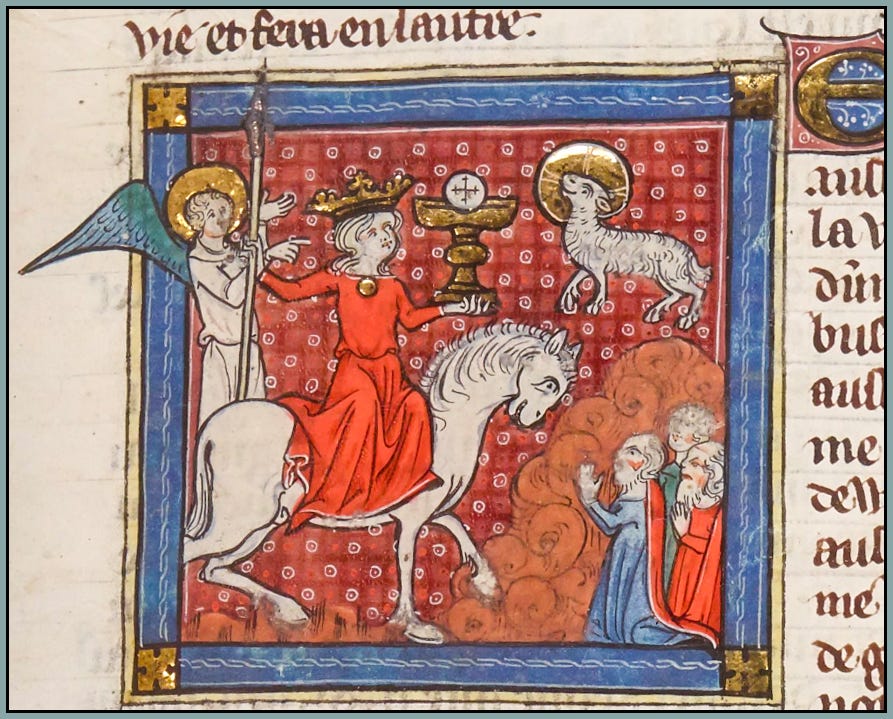
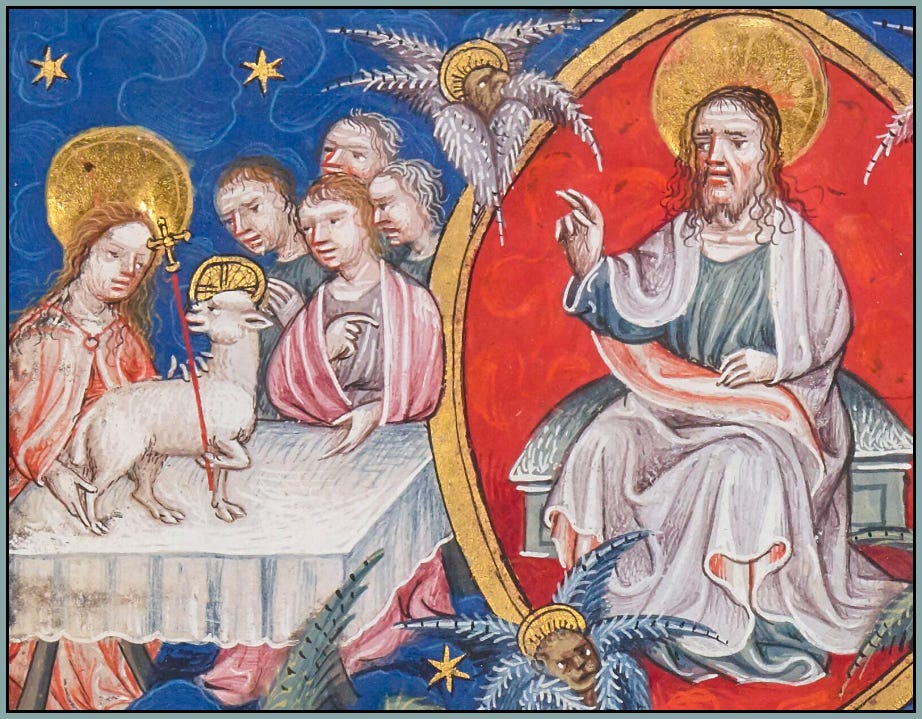
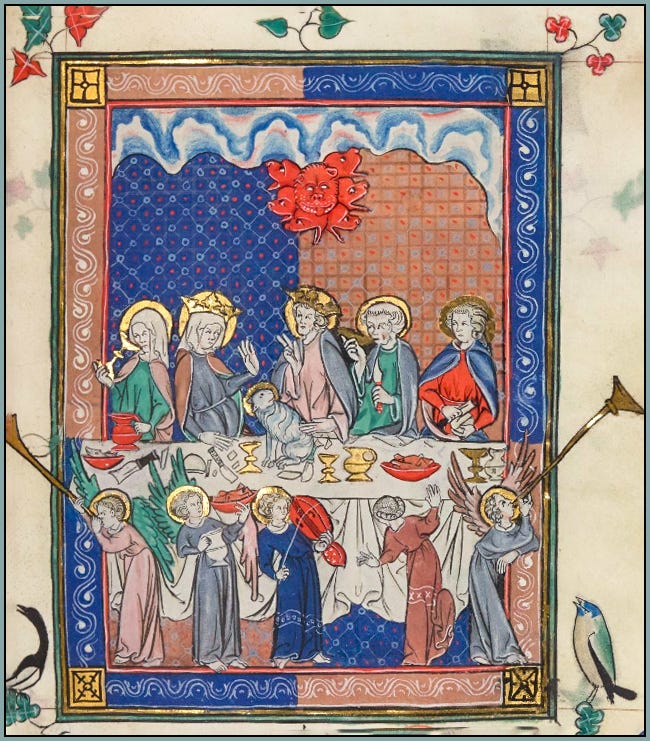

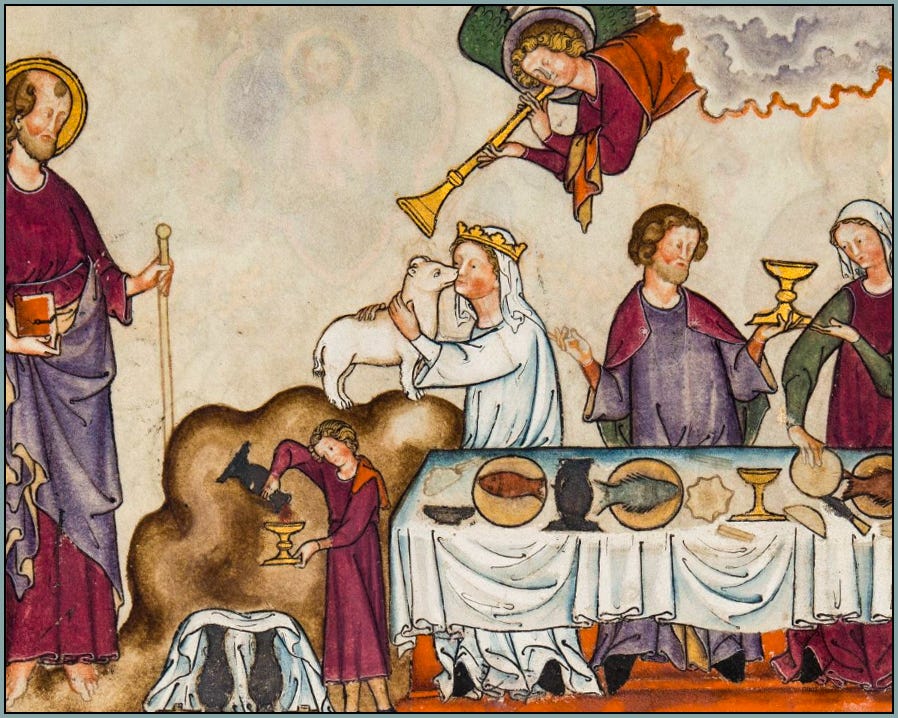
I had no idea that it was only in the Middle Ages that marriage was seen as a sacrament. This series has been very interesting, spurring deep thought. Thank you for that. And I really love the last illustration ~ the colors are so rich and the art is so satisfying. Makes you want to get up and dance for joy.
Marriage is a Holy Mystery of the Church.🕊️ ☦️ 📖
⛪ 🔔 ♥️ 👑🕯️📿 Stay close to the 🔥 Mysteries.....
....thank you for this wonderful series ⏳ of historical posts, faith hope love. Grace and peace to you Amigo!